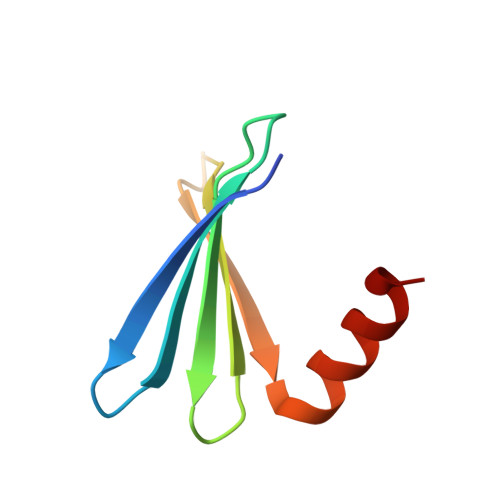c-di-AMP, a likely master regulator of bacterial K + homeostasis machinery, activates a K + exporter.
Cereija, T.B., Guerra, J.P.L., Jorge, J.M.P., Morais-Cabral, J.H.(2021) Proc Natl Acad Sci U S A 118
- PubMed: 33790011
- DOI: https://doi.org/10.1073/pnas.2020653118
- Primary Citation of Related Structures:
7AGV, 7AGW, 7AGY, 7AHM, 7AHT - PubMed Abstract:
bis-(3',5')-cyclic diadenosine monophosphate (c-di-AMP) is a second messenger with roles in virulence, cell wall and biofilm formation, and surveillance of DNA integrity in many bacterial species, including pathogens. Strikingly, it has also been proposed to coordinate the activity of the components of K + homeostasis machinery, inhibiting K + import, and activating K + export. However, there is a lack of quantitative evidence supporting the direct functional impact of c-di-AMP on K + transporters. To gain a detailed understanding of the role of c-di-AMP on the activity of a component of the K + homeostasis machinery in B. subtilis , we have characterized the impact of c-di-AMP on the functional, biochemical, and physiological properties of KhtTU, a K + /H + antiporter composed of the membrane protein KhtU and the cytosolic protein KhtT. We have confirmed c-di-AMP binding to KhtT and determined the crystal structure of this complex. We have characterized in vitro the functional properties of KhtTU and KhtU alone and quantified the impact of c-di-AMP and of pH on their activity, demonstrating that c-di-AMP activates KhtTU and that pH increases its sensitivity to this nucleotide. Based on our functional and structural data, we were able to propose a mechanism for the activation of KhtTU by c-di-AMP. In addition, we have analyzed the impact of KhtTU in its native bacterium, providing a physiological context for the regulatory function of c-di-AMP and pH. Overall, we provide unique information that supports the proposal that c-di-AMP is a master regulator of K+ homeostasis machinery.
Organizational Affiliation:
Instituto de Biologia Molecular e Celular, Universidade do Porto, 4200-135 Porto, Portugal.














